The home healthcare industry relies on technology to streamline operations, ensure regulatory compliance, and improve patient outcomes. However, many agencies struggle with IT challenges that slow down their processes, frustrate staff, and even compromise patient care. Ignoring these issues can lead to financial losses, compliance risks, and decreased efficiency.
In this article, we’ll explore five key IT challenges home healthcare agencies face—and practical solutions to overcome them.
1. Outdated or Inefficient Software
The Problem
Many home healthcare agencies still rely on outdated or poorly integrated software systems. This leads to:
- Slow and inefficient workflows due to lack of automation.
- Manual data entry errors, causing billing and documentation mistakes.
- Inability to scale with agency growth, leading to bottlenecks.
The Fix
Investing in modern, cloud-based electronic health record (EHR) and practice management systems can significantly improve efficiency. Look for solutions that offer:
- Automated documentation and billing processes.
- Seamless integration with scheduling, compliance, and communication tools.
- Scalability to grow with your agency.
Upgrading software may require an upfront investment, but it ultimately saves time, reduces errors, and improves patient care.
2. Cybersecurity Risks and Data Breaches
The Problem
Home healthcare agencies store vast amounts of sensitive patient data, making them prime targets for cyberattacks. Common security risks include:
- Weak passwords and lack of multi-factor authentication.
- Unencrypted patient records, increasing the risk of HIPAA violations.
- Staff phishing attacks, leading to unauthorized system access.
The Fix
To protect patient data, agencies should implement strong cybersecurity measures, including:
- Multi-factor authentication to prevent unauthorized logins.
- End-to-end encryption for all patient records and communications.
- Regular staff training on phishing and cybersecurity best practices.
- Frequent software updates and patch management to close security gaps.
Additionally, partnering with a managed IT security provider can offer 24/7 monitoring and rapid response to threats.
3. Poor System Integration and Interoperability
The Problem
Many home healthcare agencies use multiple IT systems that do not communicate with each other, causing:
- Duplicate data entry, leading to wasted time and errors.
- Communication gaps between caregivers, nurses, and administrators.
- Inconsistent patient records, affecting the quality of care.
The Fix
To achieve seamless interoperability, agencies should:
- Choose EHR and practice management systems that support HL7 or FHIR integration, which are industry-standard formats for healthcare data exchange.
- Utilize middleware solutions that bridge communication between different software.
- Work with IT consultants to ensure proper integration of scheduling, billing, and patient care platforms.
With fully integrated systems, staff can access accurate, real-time patient data without manual duplication.
4. Unreliable or Outdated Hardware
The Problem
Many agencies still use outdated computers, slow mobile devices, and unreliable internet connections, leading to:
- Frequent crashes and delays in patient record access.
- Inefficient remote care services due to lagging telehealth sessions.
- Increased security vulnerabilities from outdated hardware.
The Fix
- Upgrade hardware regularly. Agencies should replace computers and mobile devices every three to five years to keep up with modern software demands.
- Ensure strong and secure internet connectivity. A reliable Wi-Fi and VPN setup is essential for remote workers and telehealth sessions.
- Implement IT asset management. Track hardware lifecycles and schedule regular maintenance to prevent unexpected failures.
Reliable hardware ensures smoother operations, faster data access, and improved patient care.
5. IT Support Shortages and Slow Issue Resolution
The Problem
Many home healthcare agencies lack dedicated IT support, leading to:
- Frequent tech disruptions that slow down daily operations.
- Long downtime when systems crash or malfunction.
- Frustrated staff who struggle with technology issues on their own.
The Fix
- Partner with a managed IT service provider. Outsourcing IT support ensures 24/7 help desk assistance, proactive monitoring, and rapid issue resolution.
- Implement remote IT support solutions. Cloud-based remote access tools allow IT teams to troubleshoot issues quickly, minimizing downtime.
- Train employees on basic IT troubleshooting. Educating staff on simple fixes, such as restarting systems or checking connections, can resolve minor issues faster.
Having a solid IT support strategy in place reduces disruptions and keeps operations running smoothly.
Conclusion: Technology Should Empower, Not Hinder, Home Healthcare
IT challenges can slow down home healthcare agencies, creating inefficiencies, compliance risks, and security vulnerabilities. However, by proactively addressing these issues with modern software, robust security measures, reliable hardware, and strong IT support, agencies can improve efficiency, enhance patient care, and maintain compliance.
Next Steps
- Conduct an IT audit to identify weaknesses in your systems.
- Invest in modern, cloud-based software with strong integration.
- Strengthen cybersecurity practices to protect sensitive patient data.
- Upgrade hardware regularly to maintain speed and reliability.
- Ensure fast, reliable IT support to minimize disruptions.
By tackling these IT challenges head-on, home healthcare agencies can focus on what truly matters—delivering high-quality care to patients.







